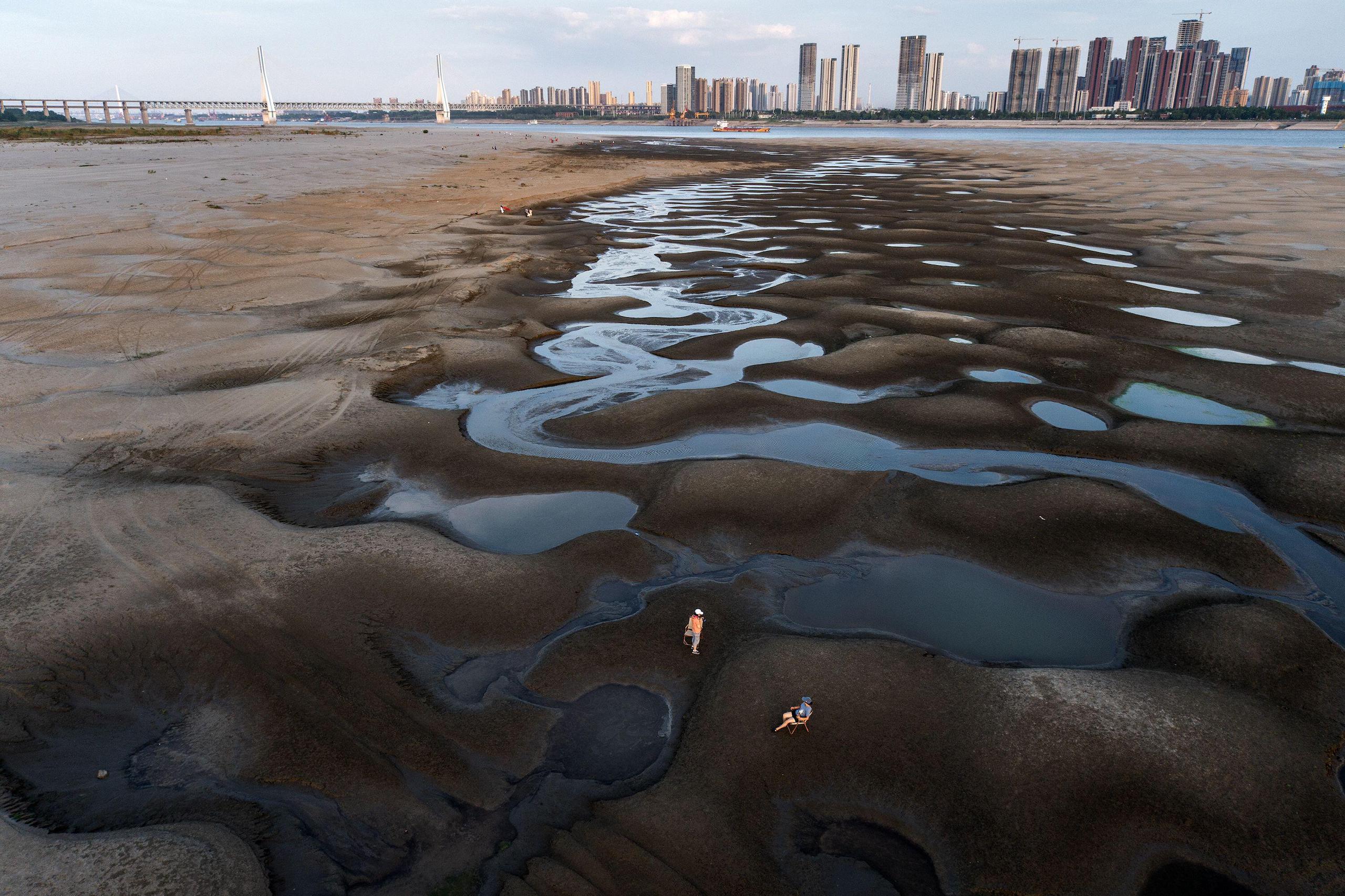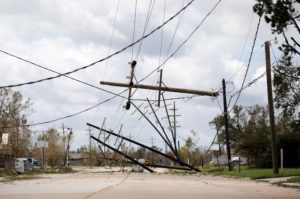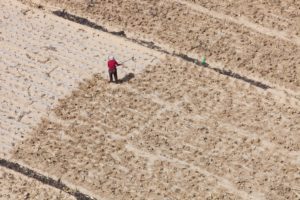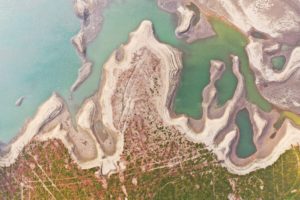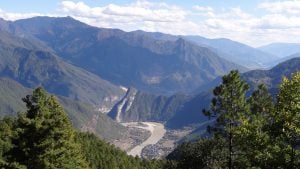This summer, China saw the hottest, widest-spread and longest-lasting heatwave since the country started to keep comprehensive records in 1961. What should have been the flood season for the Yangtze basin became a record-setting drought. Water levels in Dongting and Poyang lakes dropped several metres lower than expected for the time of year. Small and medium-sized rivers in a number of provinces dried up, as did some reservoirs. The mouth of the Yangtze saw a salt tide that is rare in summer. The drought also caused severe electricity shortages in Sichuan and Chongqing. At the end of September, 95% of Jiangxi was still suffering an extreme drought.
Meteorologists have linked the drought with the general trend of global warming and think it was seasonally affected by unusually high temperatures on the Qinghai–Tibetan Plateau, the La Niña phenomenon, and warmer water temperatures in the Indian Ocean and the north-west Pacific. The drought, combined with the 2020 floods in the south and the 2021 floods in the north, are making the impacts of climate change much more real for ordinary people.
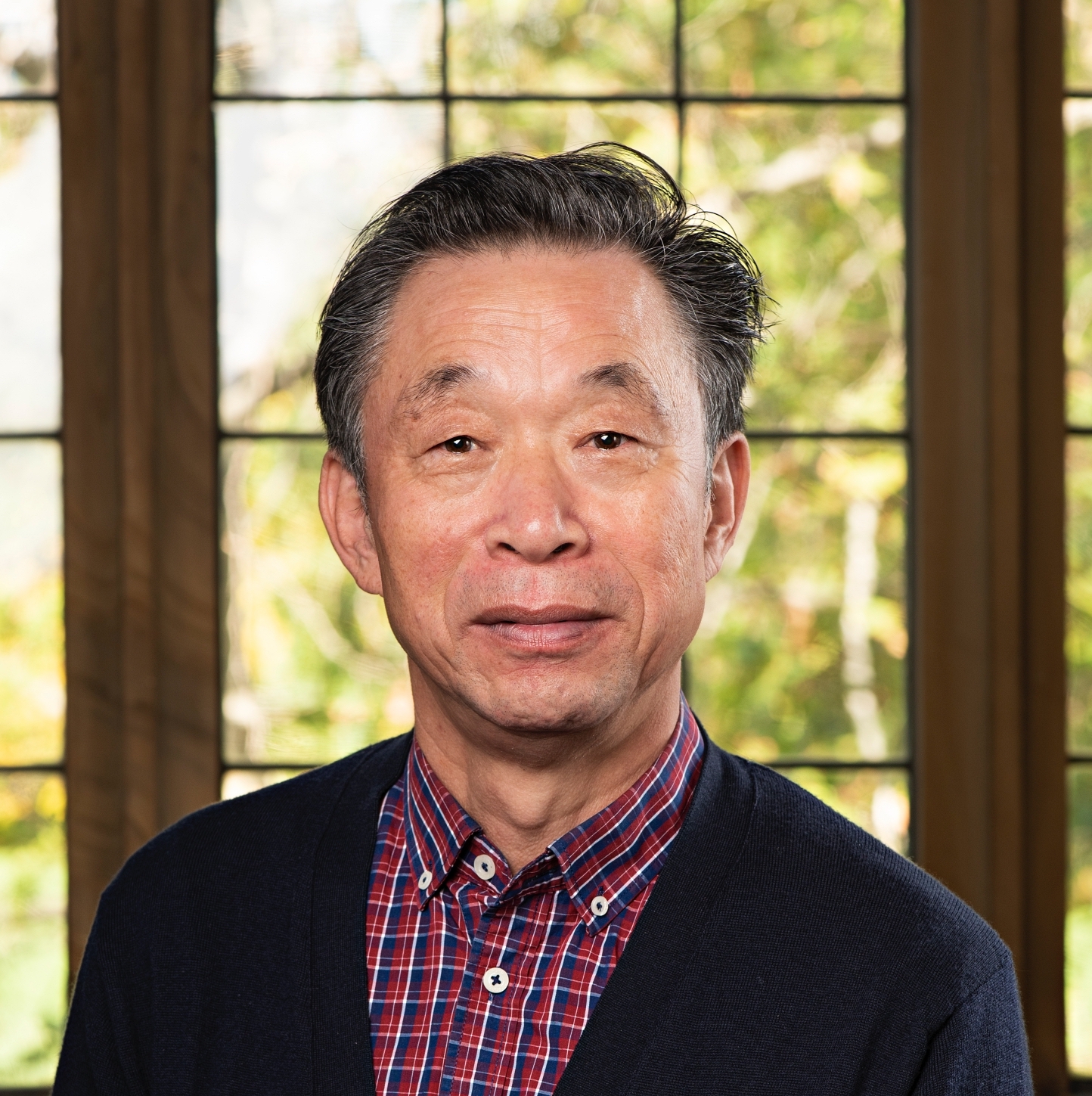
Meanwhile, China is speeding up the construction of a vast “national water grid” to solve regional water shortages. The government increased investment in the project this year, partly to help stabilise the economy. By late August, water projects worth more than 1.8 trillion yuan (US$250 billion) were under construction, more than ever before.
But what can water diversion achieve when extreme weather is further exacerbating the uneven distribution of water resources both geographically and over time? China Dialogue spoke with Mark Wang, a professor of geography at Melbourne University and director of its Centre for Contemporary Chinese Studies. Since 2011, he and his team have been studying how China manages its water resources. They have examined water, rural and agricultural issues in the Yellow River basin; supplies of fresh water in Shanghai under climate change; and the South-to-North Water Diversion project. Team members have a strong background in human geography and focus on the social and governance issues associated with major water projects and water resources. Rather than take an engineering approach focusing on increasing water supplies to meet ever-greater demand or solving water shortages, they look at the social, institutional and environmental aspects of balancing supply and demand by increasing demand-side water conservation.
China Dialogue: In mid-August, reservoirs on the Yangtze responded to the drought by reallocating water among themselves. How useful are such intra-basin transfers when responding to extreme weather events like this?
Mark Wang: Such joint transfers can be of some use, and the Chinese government is good at integrated management of the upper and lower reaches of the river. It can do it, it can do it well, and it will be of some help with, for example, irrigation in certain areas. But effectiveness is limited by a number of issues.
The first is: who gets the water? As it flows downriver, the water doesn’t benefit the worst affected areas, Sichuan and Chongqing, which are upstream. They actually provide the extra water. It was reported that reservoirs on the upper and middle Yangtze provided 5.3 billion cubic metres of water in early and mid-August. Reservoirs on the upper reaches of the river, mostly in Sichuan and Chongqing, provided 70% of that.
Second is the amount of water that can be made available. That 5.3 billion cubic metres is no small amount, but it’s about 0.5% of the 1 trillion cubic metre annual flow of the river or 2.6% of the basin’s annual surface water supply of 200 billion cubic metres. It can meet some needs, but only so far.
We need to work with what nature gives us, not insist on remaking it
Third, what should that water be used for? Normally, agriculture accounts for half of all water use on the Yangtze basin. Another 30% goes to industry, 17% is for municipal use [including households], and 3% is for ecological flows. I believe ecological flows will be the first to go in this situation, as those are often regarded as dispensable. Domestic supplies will get priority and then industrial and agricultural uses, with industry very likely to come first between the two. Over 12 million mu (8,000 square kilometres) of farmland has been affected by drought over the six provinces on the Yangtze. On average 1 mu needs 400 cubic metres of water a year, which means 5 billion cubic meters for the whole basin. How much of that 5.3 billion cubic metres will be left for agriculture once households and industry have been supplied?
We can tackle a drought in that way, but there’s only so much good it can do. And remember, the drought affects the entire basin, not just the lower parts.
Will cutting off ecological flows have a severe impact on the environment?
Yes. The ecological flow is the minimum necessary to keep an ecology functioning. But in China it’s often thought of as ornamental. For example, some water from the South–North Water Diversion project is used in Beijing or Xiong’an to flush out polluted rivers – that’s not an ecological use in the strict sense.
We’ve seen reports of a big number of smaller rivers running dry. Does that indicate ecological flows are being overlooked?
This is an important issue for China and also a lot of Asian countries, including Japan. Rivers are living things. The course of the river, its oxbow lakes, all have evolved in different ways and have different ecological worth. Rivers need a certain amount of water, the ecological flow, to keep ecosystems functioning. A river drying up can have catastrophic outcomes, with many organisms perishing. It’s something we don’t pay enough attention to. We worry about the major rivers, but the smaller ones, the tributaries and streams, have long been overlooked. China is adopting a “river chief” system, which will see a local official take responsibility for each river. That’s a great system, but the vast majority of river chiefs don’t understand how rivers work. They worry about preventing pollution, illegal sand extraction or illegal occupation of the river course. But we rarely hear of them ensuring ecological flows. We need to take a comprehensive approach to keeping our rivers alive.
Could such extreme weather events be mitigated by transfers between basins? Particularly in a year like this, when the south has suffered a drought and the north floods? And if it is technically feasible, what governance challenges are there?
We must not overestimate the ability of water transfers to relieve regional droughts caused by extreme weather. Water transfers can’t solve extreme weather caused by climate change. The impacts are too big and it’s impossible to predict which areas will be affected.
China’s national water grid is starting to take shape, with its ultimate goal of forming three routes running north to south and four east to west. But it is designed to take water from the Yangtze and send it north to an area centred on Beijing – the most water-stressed and irrigation-reliant part of China. In some senses, the population, rapid urbanisation and increasing water demand from industry mean water supplies there are even more stressed than those in Xinjiang. The direction of flow means the South–North Water Diversion project can’t solve droughts in the Yangtze basin. There is a scheme being planned which would take water from the Three Gorges reservoir to the lower reaches of the Han River. That would relieve shortages of water in the rivers below the Danjiangkou reservoir, which have arisen due to the transfer of water to the north. But that is merely a reallocation of water within the Yangtze basin.
Despite these problems, the South–North Water Diversion project is a national-level undertaking. Presumably that means there’s no fighting over the water between the provinces it passes through?
Almost none. But it does flow through a lot of provinces, some of which contain both areas that sacrifice water and those which benefit from it. That means central government subsidies are important. Water transfers aren’t just about physically shifting water. There are flows of money and power, and measures need to be taken to manage those. The interests of the donor areas need to be protected, and opportunities for growth need to be provided.
We’ve seen the uneven distribution of water in China worsen, both geographically and over time. In 2020, the south suffered floods. In 2021, it was the north. Now we have a drought in the south when it should be flood season. At the same time, we’re building a national water grid, with further increases in investment made this year. Do you think those projects will be enough for China to meet the water challenges climate change will bring?
That uneven distribution isn’t a new problem, but it has become worse in recent years. I have reservations about continuing to invest in physical infrastructure, to be building more dams and water transfer projects, under these circumstances. I’m more in agreement with Xi Jinping’s “16-character water governance plan”: save water first, distribute water evenly, manage water systematically, and make use of both the market and government. I’m excited about that as it prioritises water conservation, which is a change from engineering-first thinking. The idea of simply transferring enough water across river basins to meet demand is no good. We need to work with what nature gives us, not insist on remaking it.
So where should the money that’s being spent on those projects go instead? I think our water infrastructure is already good enough. We have world-leading technology and hardware. What if we spend it on water-conservation measures? What if we expend the same amount of effort in that direction? And could we make use of our institutional advantages and make a major social engineering push for better management of water resources? It’s not that China isn’t trying to conserve water. You hear talk of “sponge cities” everywhere. But it’s not doing enough. Irrigation accounts for 60% of China’s water use. Drip irrigation is developing well, but the majority of farmland is still using flood irrigation, which is a massive waste of water. Reducing agriculture water use would significantly decrease water stress.
The water grid can help by transferring and storing water, but there is only so much that engineering projects can do to solve water shortages. I hope that in the future China’s water-management strategy won’t be decided solely by engineers. We need more environmental and social scientists playing a part in the policymaking process, to ensure those factors are also given consideration.
Overall, the drought during what should be the flood season is a clear warning: we cannot rely on engineering to solve these problems. The impact of climate change on water resources and the water environment will be unpredictable. If a drought happens in the same place every year, you can put water diversion infrastructure in place and mobilise the entire country to transfer water to you. But the reality is that droughts do not do that. They strike here one year and there the next. Physical infrastructure cannot respond quickly enough.
